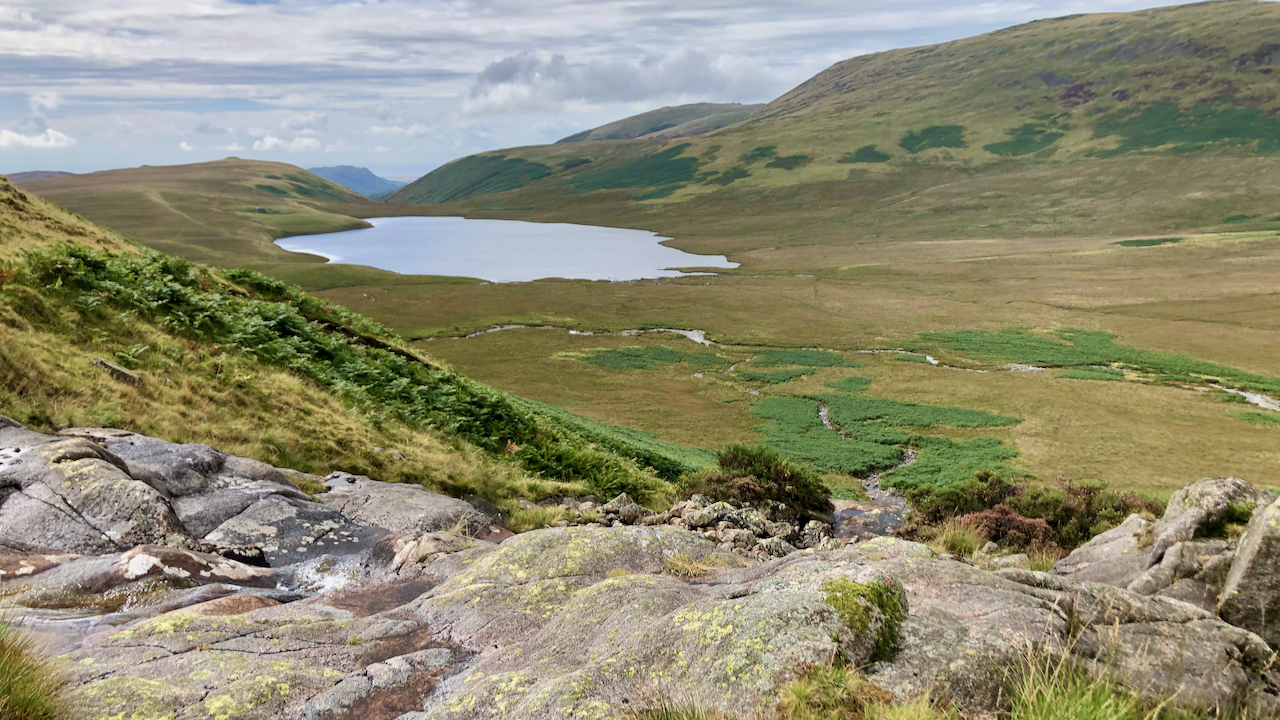Described by Coleridge as “flounder-shaped” with “it’s Tail towards Sca’ Fell, at its head a gap forming an inverted arch with Black Comb & a peep of the Sea seen thro’ it“1Lindop, Grevel. “A Literary Guide to the Lake District”. Page 250. 1993. Chatto & Windus. ISBN 0701136154.. He was on his ascent of Scafell in 1802, and took the direct route from Burnmoor Tarn, so he could well have passed by this very spot.
Another author to have penned the idyllic landscape was George Gissing in his 1893 novel ‘The Odd Women‘: “A wild spot, a hollow amid the rolling expanse of moorland, its little lake of black water glistening under the midday sun.“2Ibid.
Burnmoor Tarn belongs to the National Trust, once part of the 8,000 acre Leconfield Estate, which was accepted by the Inland Revenue in part payment of estate duty following the death of the third Lord Leconfield in 19523‘Lake District Land for the Nation: 8,000 Acres from the Leconfield Estate in Cumberland | the Sphere | Saturday 28 November 1959 | British Newspaper Archive’. 2022. Britishnewspaperarchive.co.uk <https://www.britishnewspaperarchive.co.uk/viewer/bl/0001861/19591128/023/0023> [accessed 6 September 2022].
The tarn was a key landmark in the ancient packhorse route from Eskdale to Cockermouth, via the Black Sail Pass and to Keswick and Ambleside via Sty Head Pass4‘Eskdale Railway. TRAFFIC FOR AN 0LD ROAD.’ | Millom Gazette | Friday 03 September 1926 | British Newspaper Archive’. 2022. Britishnewspaperarchive.co.uk <https://www.britishnewspaperarchive.co.uk/viewer/bl/0002289/19260903/048/0003> [accessed 6 September 2022].
- 1Lindop, Grevel. “A Literary Guide to the Lake District”. Page 250. 1993. Chatto & Windus. ISBN 0701136154.
- 2Ibid.
- 3‘Lake District Land for the Nation: 8,000 Acres from the Leconfield Estate in Cumberland | the Sphere | Saturday 28 November 1959 | British Newspaper Archive’. 2022. Britishnewspaperarchive.co.uk <https://www.britishnewspaperarchive.co.uk/viewer/bl/0001861/19591128/023/0023> [accessed 6 September 2022]
- 4‘Eskdale Railway. TRAFFIC FOR AN 0LD ROAD.’ | Millom Gazette | Friday 03 September 1926 | British Newspaper Archive’. 2022. Britishnewspaperarchive.co.uk <https://www.britishnewspaperarchive.co.uk/viewer/bl/0002289/19260903/048/0003> [accessed 6 September 2022]

Leave a Reply